
Sep '06 - Dec '09
When I arrived to Medellin by highway from Bogota the thing I first noticed was the ever present informal settlements in the mountains. But these were different, from the highway you could see the loops of cables carts moving in and out from the informal settlements and the metro that then moves the inhabitants from the mountains into the mainstream of Medellin's cultural and social life. However, you could already see that this culture did not only exist outside the mountainside comunas (the Colombian word for slums) as in the distance I could make up 3 black towers that I immediately recognized as Colombian architect Giancarlo Mazzanti's Parque Biblioteca España.
I have to admit that I was a bit fearful to go to the library as my family (that as I, all hail from Bogota) warned me that I would be robed "down to my underwear" if my wife and I even attempted to go there. This attitude comes from a seemingly endless war (mostly about drugs) in Colombia that at one time was the number one activity among gang members in Medellin's Comunas. However, these fears were completely unfounded as we always felt safe while visiting the library. This is in fact what these libraries were meant to do, bring people and other formal services (education, banks, etc...) up to the Comunas to stop the violence and allow a renewal program to take place.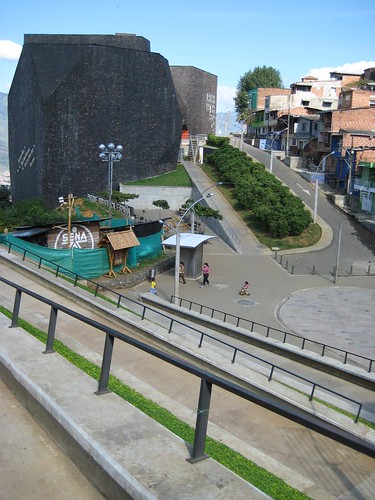
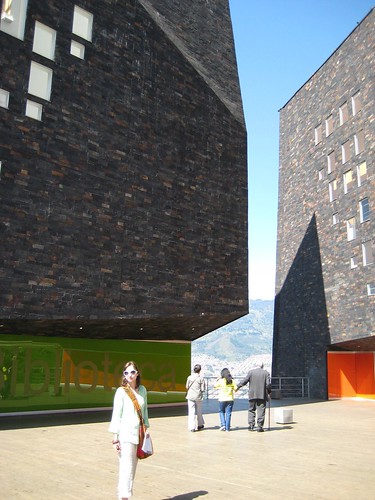

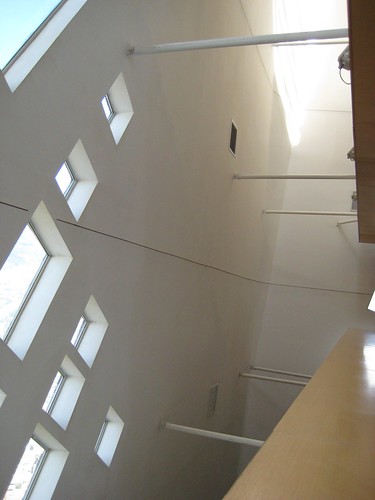
Another such library is the San Javier Library Park by architect Javier Vera Londoño.
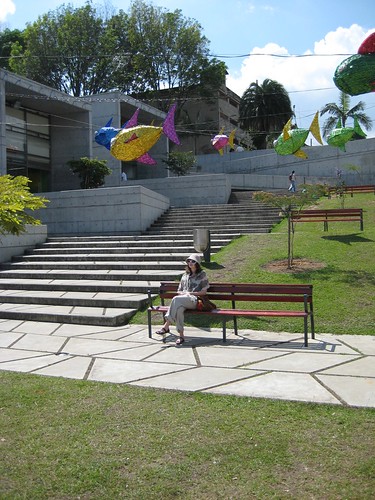

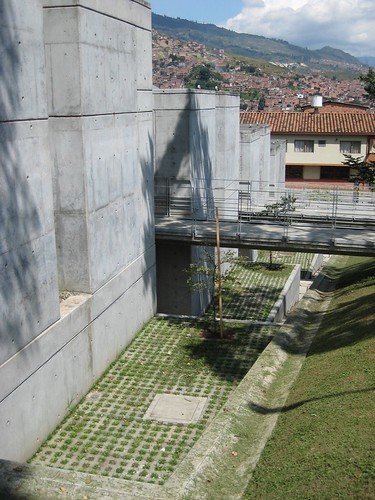
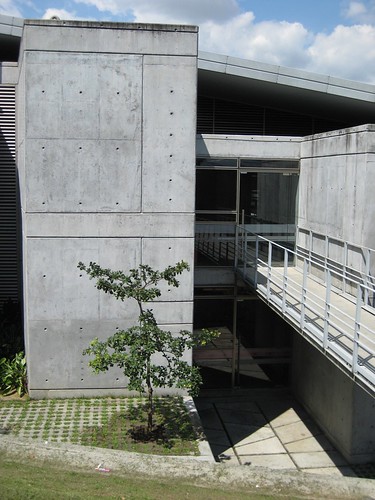
From the San Javier Library we took Medellin's second cable cart line that goes up to a different set of Comunas from those around the Parque Biblioteca España. In the trip I wanted to see the smaller infrastructural changes that the city is making to make the Comunas a little bit better.
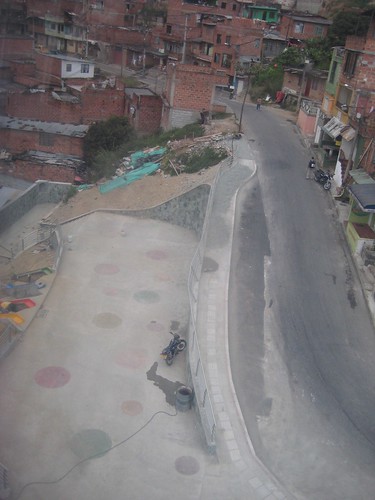

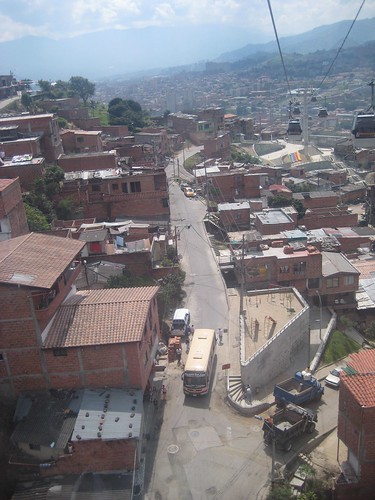
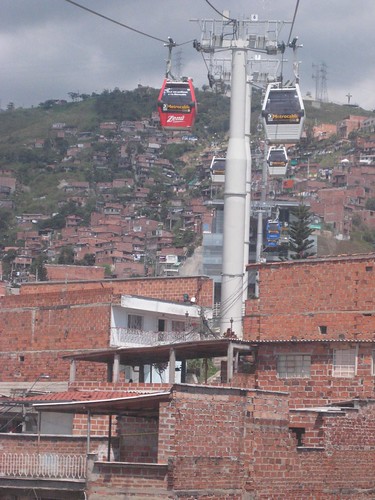
I am of course still processing the trip, but I think that I can already say that it seems as though Medellin decided not to formalize the Comunas. Rather the city is in the process of giving people in these communities better services and infrastructure (frames?) and then is also providing them with the tools to improve their conditions (infill?). I talked to a woman in the cable cart who told me how much easier life was since the city began to make some better roads, schools, and the major infrastructural changes (the metro and cable cart). With that work done, she is now in the process of improving her own house with a small loan.
Medellin also shows how landscape architects, architects, and other designers can work in these contexts without sacrificing the quality of design. In this case they enjoy the patronage of an activist mayor that allows them to do it, which makes me wonder what would happen if that was not the case? This is, I think, an important element for designers to find ways to do this type of work in this context without; 1-the need of a strong government, and 2-compromising the design process.
Although I found the work in the Comunas very exciting, it is by no means the only thing going on in Medellin. The most famous example of contemporary design in this City is the Orchid Shading Structure by Colombian firms Planb and JPRCR.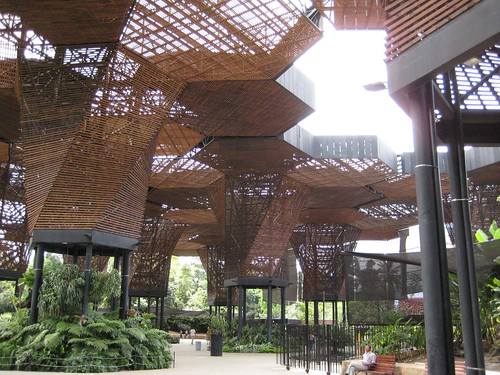
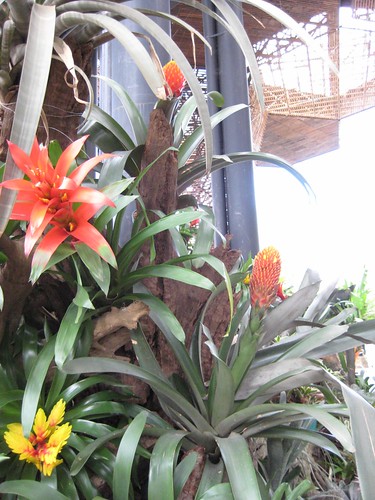
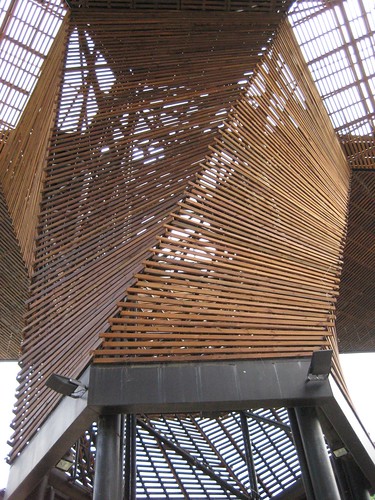
FLICKR SET WITH MORE IMAGES AND ARCHITECTURE FROM MEDELLIN.
(All images by Quilian Riano)
Some more thoughts on Medellin in my thesis blog.
More info:
Medellín’s Nonconformist Mayor Turns Blight to Beauty
Parque Biblioteca España
Sitcks and Stones



11 Comments
The Orchid Shading Structure is amazing.
more photos here
wow- what a great trip you're having! Your pictures show that there is more innovation in urban design in latin america then up in norte. If I was only so lucky to get clients willing to embrace these sorts of challenges.
This reinforces the tranformative experience I had during my santo domingo studio.
Thanks dot those are amazing.
tree, it has been a great trip. I am now back in Bogota and will be here for a few more days. I think that, as Koolhaas says, these cities will be modern, but modernity will be different from what we are used to. Medellin is a good example of a lot of small and large modernizing principles developed in places like India and Brazil being successful. It is an exciting time for el sur y el norte, learning will go both ways.
Amen.
it is about time that the north stopped trying to teach the south how to do things and that the southern nations finally have political will and the confidence to make things happen in their own brilliant way.
that work is simply fantastic.
if learning does go both ways would be even better. i wonder if maybe we northern types are not too arrogant to see the lessons or not. fingers crossed!
i think the key point of the above is that it takes political will, not (just) good architects to make it work. kinda wonder if the new obamanation will have that or not...?
Q, is that library a amazing as the photos in AR?
jump, do you think that good architects have to be an active part of that political will?
beta, I liked the library a lot. However, after leaving I noticed how I only took interior shots of the unoccupiable spaces between the skin and the generic (and a little boring) library box inside of it. At the end it is a building all about its, at times, sublime skins/screens/meshes and its exterior presence in the Comuna.
I found it successful and this play between the highly specific and the generic may just be the perfect thing to do in this context. The inside allows programs and activities to change over time, while the skins and presence will keep the architect's intent no matter what.
quilian,
i am coming to think that it is probably a necessity. I am recently thinking the best way to have a larger effect as architects is to start writing, publishing, presenting, speechifying and using all the tools of the politician to make everyone, including the politicians aware of alternatives to the practices we know aren't working...
i can't help but think that cameron sinclair's AFH project would never have an effect if it weren't for his political efforts to gain support from public and govt alike. simply designing without that framework intuitively feels like it would be ineffectual... but i have no way to prove any of the above.
Very interesting stuff about Medellin. This is one of the cities in my calendar this year. I love the Biblioteca Espana picture, I had seen this building in magazines, but your picture really shows how the building responds to the magnitude of the Comunas, which is the whole substance of the project. Mazzanti was one of my studio professors about 14 years ago, and I know that he has received heavy criticism in Colombia for this design being similar to Koolhass' Casa de la Musica.
Note that the word Comuna is applied to the urban administrative subdivision of Medellin to designate a legalized informal urban structure and it is not typically applicable to other cities in Colombia.
Thanks for sharing.
q, jump and all, i agree on the political involvement issue- it's architects' detachment over the past years that have caused the profession to become powerless and feel irrelevant.
not that far from medellin right now, but zero budget. your pics make it very tempting to visit, though. thanks for posting!
i love your pic of the stair with appendages:
http://farm4.static.flickr.com/3189/3163406120_df93a30b70.jpg?v=0
i'm buying the frames/infill concept now... but what seems bizarre is when (infrastructural) nodes paid for by government are largely 'cultural'...i guess this is part of what architecture is and can do (libraries, parks) but it seems to stand in contrast to more democratic or organic systems like the comunas? that said, the one-to-one correspondence of infrastructure to effects is often amazing.
is it always about the activist mayor, in the americas? are there similar large-scale examples where it emerged from popular organization instead?
Block this user
Are you sure you want to block this user and hide all related comments throughout the site?
Archinect
This is your first comment on Archinect. Your comment will be visible once approved.